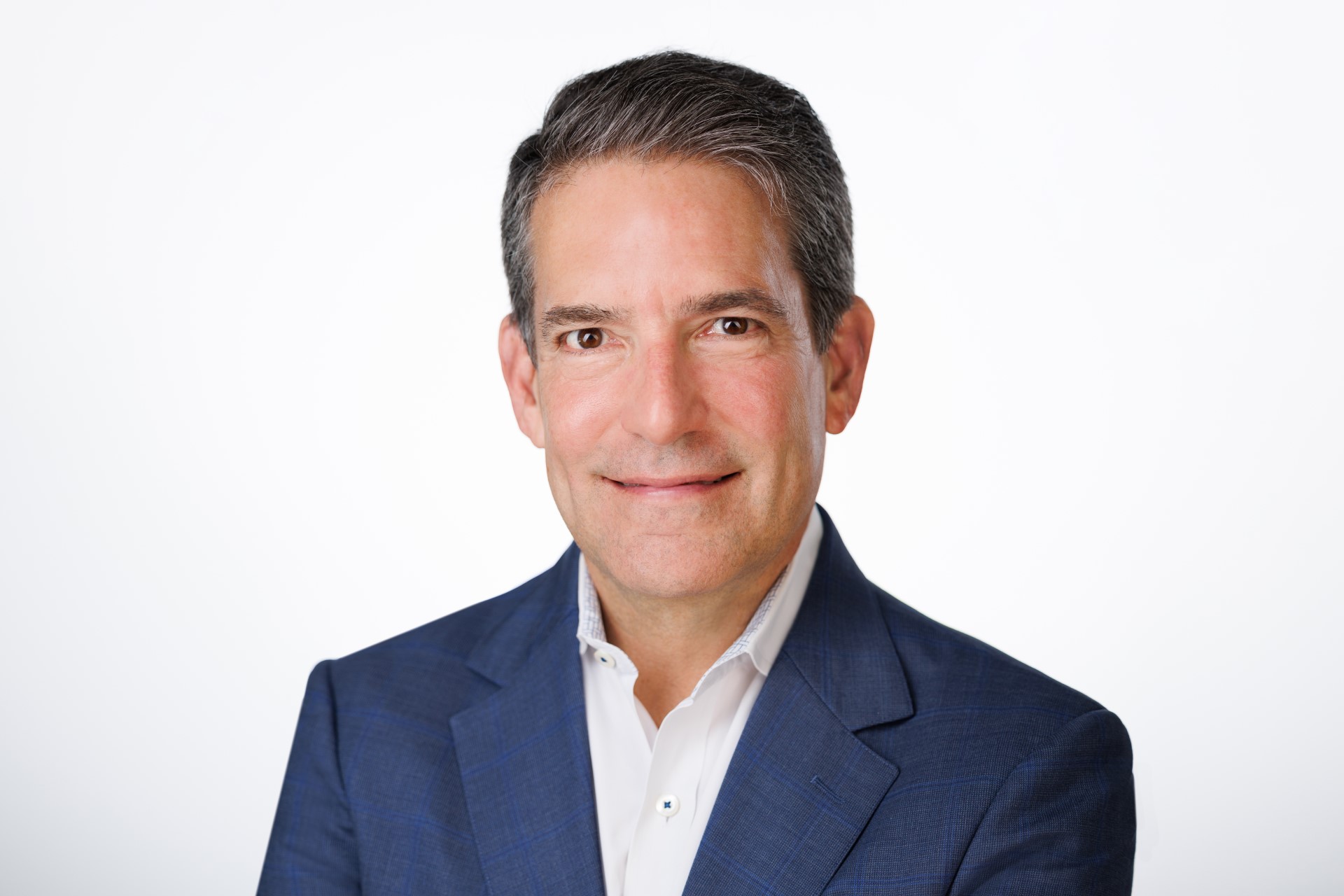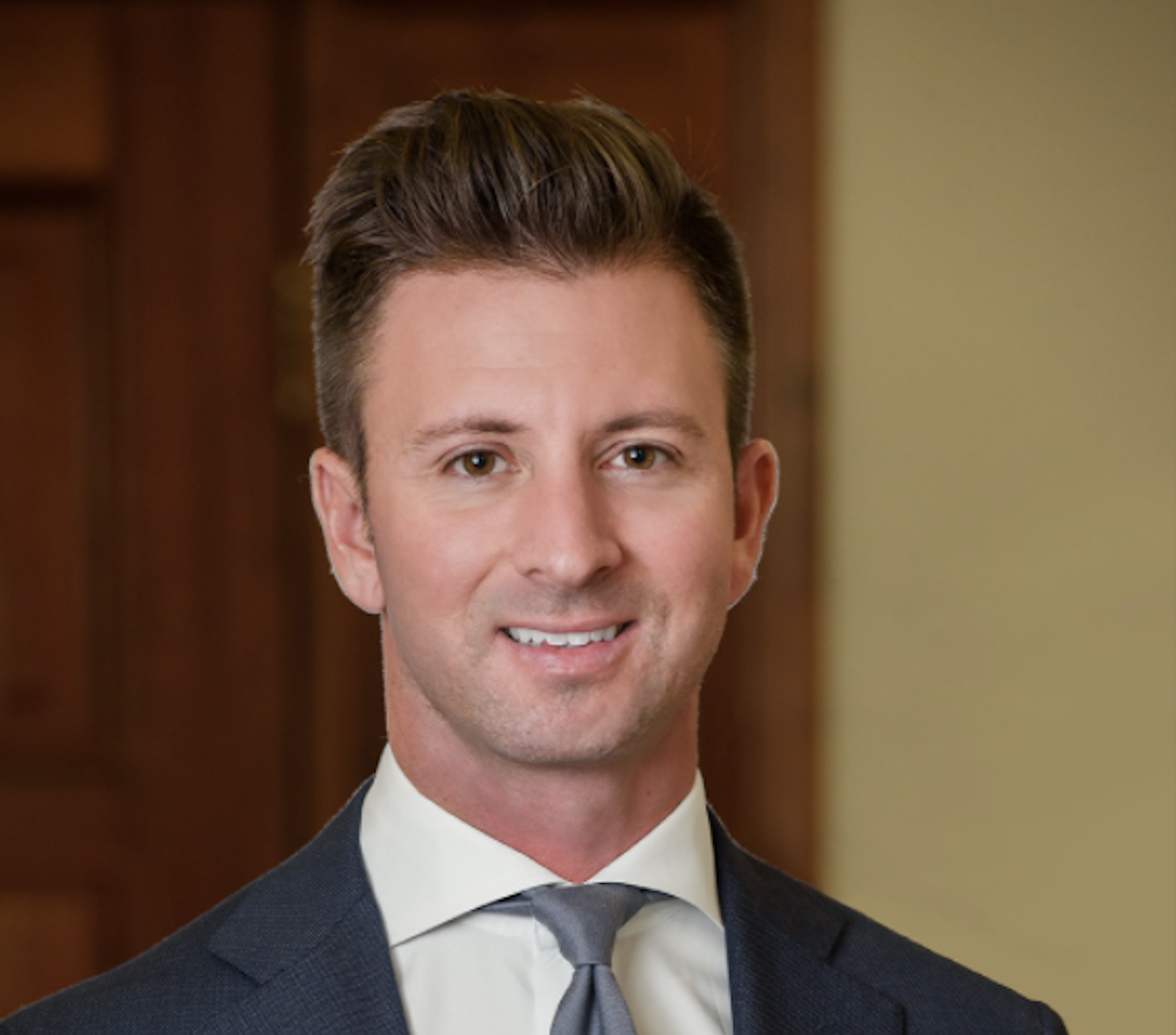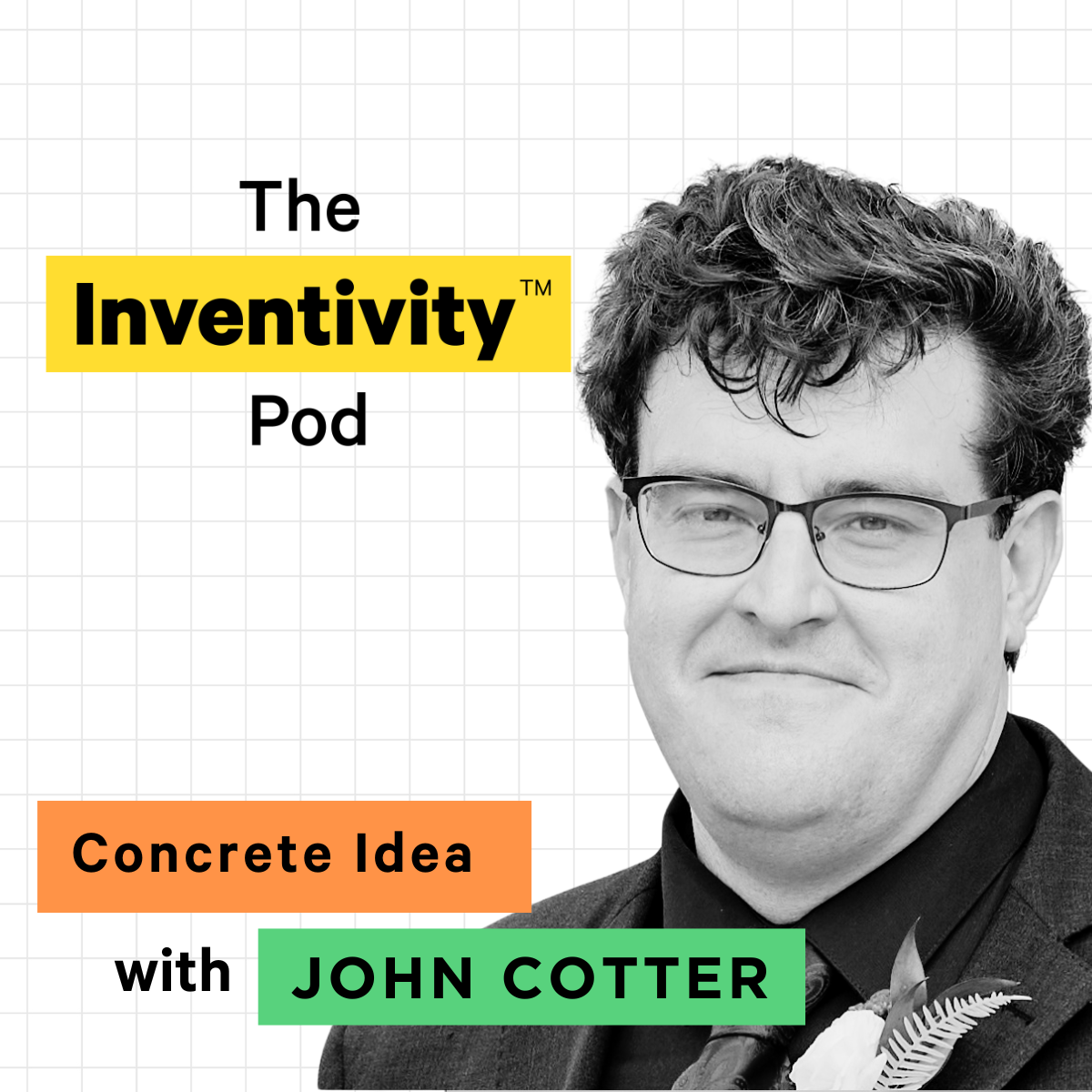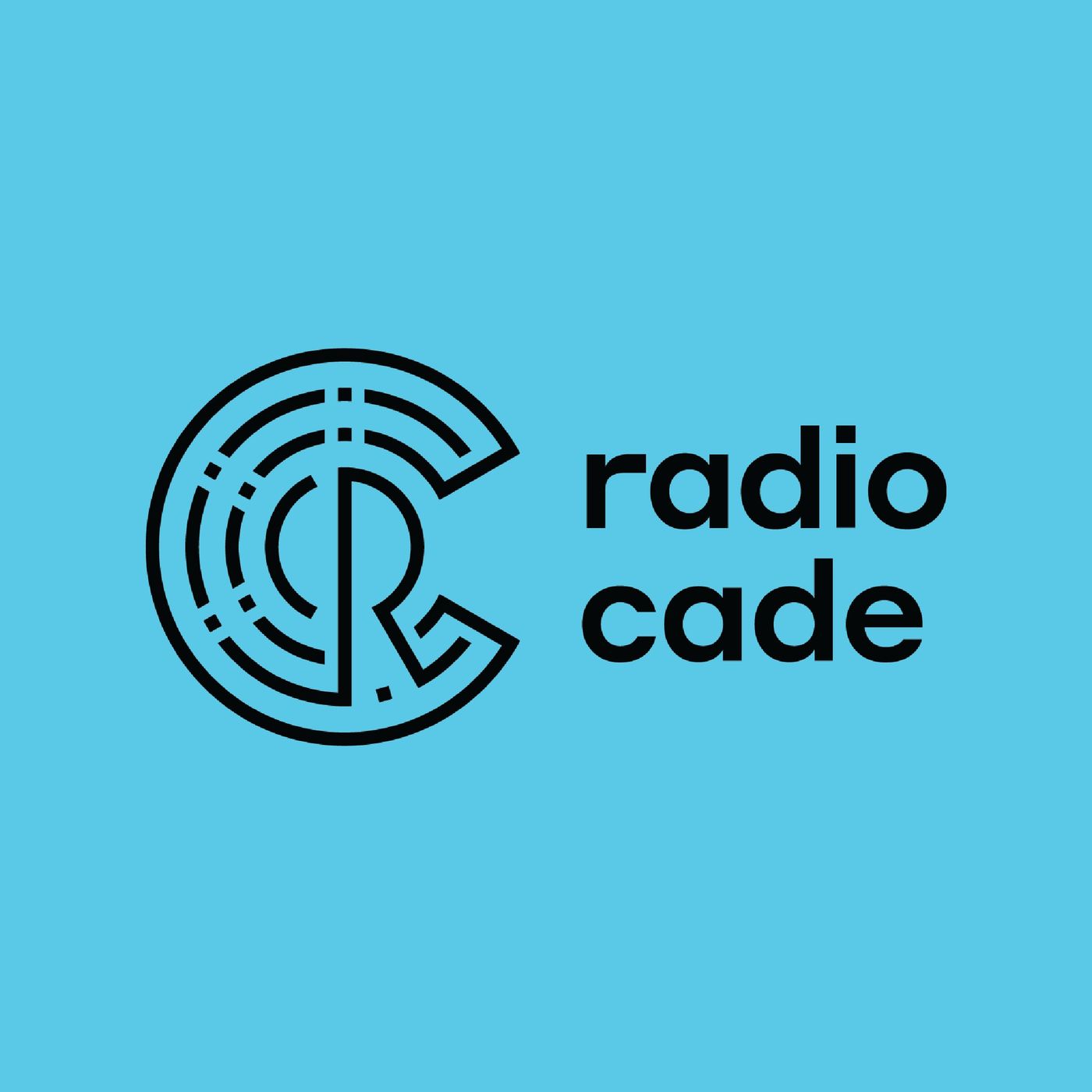Episode Transcript
Richard Miles 00:00:01 Inventivity, what does it mean? The state of being inventive, creating, or designing new things or thoughts. Hello, I'm Richard Miles. Welcome to the Inventivity Pod. Join us as we speak to inventors, entrepreneurs, and visionaries who are using Inventivity to change the world. They'll bring us alongside their journey as they share their personal stories from start to finish, including the triumphs, the failures, and everything in between.
James Di Virgilio 00:00:30 Welcome in. I'm James Di Virgilio, and this is our Hope for the Future Series, an innovative look at sustainability. For this limited series, we're talking to inventors who made it to the finals of the Cade Prize for Innovation, which since 2010 has been Florida's premier innovation prize. And this year in 2023 is now a national prize with an overall purse of a hundred thousand dollars. Today's guest is Dr. John Cotter, the owner of Cotter Research and Development. He's a PhD. He's done a variety of things in his life educationally, and he joins us today to discuss, Nailed it, which John, I'm really excited about talking about. I won't even give away what it is yet. It's a very interesting concept, but welcome to the show.
Dr. John Cotter 00:01:13 Thank you.
James Di Virgilio 00:01:14 All right, so let's talk about Nailed It. Imagine first time listeners hearing that, probably think it has something to do with maybe what it isn't, but let's walk through what is nailed it.
Dr. John Cotter 00:01:22 Nailed it, concrete is this concept of finding an alternate to lumber that installs in the same way that lumber does. And there's certain properties that lumber has that allows it to be nailed together and screwed together. And one of the sort of like reasons as to or ideas behind this is there's this sort of theory as to why is lumber used as a building material? And there are a couple different ideas that people can come forward with, like low cost, which is true. I mean, there was a time when aircraft were built out of lumber, which is kind of surprising. That's back in like biplane, like canvas covered biplane days where they were making aircraft out of lumber. So it has a lot of advantages, but what I've been trying to do is I've been trying to figure out if there's materials that can be made that would have similar properties where they could be installed like lumber, kind of tap into that advantage that lumber has, but possibly providing advantages in other ways that lumber has issues with. So that's part of the idea behind why I was even working on this sort of concrete. And actually the funnier part of the, the story is I wasn't actually originally working on concrete. I'm, I'm sitting in I-Corps and I'm thinking, okay, I'm working on these plastics because I know that there are ways that you can take plastics and you can, you can nail into them and you can screw into them.
James Di Virgilio 00:02:52 Briefly tell me about that I-Corps program.
Dr. John Cotter 00:02:55 I-Corps is a process where they're trying to take typically college students and they're trying to teach them how to do customer discovery, which is sort of its own apparatus, its own process, its own thing that you have to do if you're going to invent something. And it's a very unnatural experience. I would describe for most people that are of the mindset that I am intelligent and I can come up with these new ideas to do these new things. So what they try to do with I-Corps is they try to teach people to go and fill in that gap there. Because when you talk about inventing something, you can talk about inventing all these great ideas all day, but if you don't actually know if anybody's gonna use it, it's not particularly useful, which is unfortunate. Sort of a hard lesson to learn. So I'm, I'm sitting in I-Corps and I know the plastics, you can drive screws into them and they'll hold, they behave differently.
Dr. John Cotter 00:03:47 I know that you can drive nails into plastics. I know that there was a time when people made plastic fences other than the vinyl fences they have nowadays. And my thoughts were to take those, increase the strength. Great idea. But I realized when I was sitting there, the real thing that you're trying to do is you're trying to make a product that you can nail together. And I realized there's probably a way that you can do it with a concrete. So I started experimenting with different types of mixes of concrete with different things added to them to try and get to the properties I was seeking. And I managed to do it over time. It's, it's grown into something that is more useful, but it all stems from me just sitting in an I-Corps, thinking about, wait, the real problem that we're trying to solve here is we need something that nails together. We want something that lasts longer than wood. And me just sitting around thinking about that problem and how to solve it in other ways is how I came up with the nailed it concrete.
James Di Virgilio 00:04:52 And so with this nailed it concrete, now you're able to do everything for the most part that you can do with wood. Is that an accurate statement?
Dr. John Cotter 00:05:01 There are differences. It's not a perfect answer. The problems wind up coming down to, you have to sacrifice something somewhere. So in the case of the Nailed it concrete, the, the sort of sacrifice that's made is it is heavier than wood. So you don't get the strength to weight property that you do with wood. But the advantages you get are that it winds up being low cost, you can install it like wood, it is heavier. That's the con. But the big advantage is though it's heavier, that lasts significantly longer because it's a reinforced concrete. What has happened since I was doing the Cade Prize like presentation, I went from qualitative to quantitative. I made a couple improvements to the design because it, it's not just a concrete, it's a concrete that has a little bit better holding strength. It's been quite a road of development.
James Di Virgilio 00:06:05 What has this been like marketability wise? Have consumers wanted something like this? Have they found this as a solution? Has it been tough sledding to get adoption? Where are you in that process?
Dr. John Cotter 00:06:14 So, I am to the point that I am making product, but it's not in the sense of making product for whoever wants to buy it. It's more in the sense of I'm trying to make marketing materials where I show, this is the concrete I have, this is what it's used for. You can make fences, you can make decks. I have a couple videos where I made a sample fence and I have it shown being screwed together, nailed together. And you can drive staples in it with a staple gun. But I need to be able to make those marketing materials so people can go, oh yeah, that's a concrete that’ll last. I'm trying to get the price lower on the actual product that is sold. What becomes problematic with figuring that piece of the puzzle out is to get a lot of the economies of scale to drive the price down on a product like that requires making a lot in one location, which becomes difficult when you're starting out because you don't have a bunch of money to spend on a concrete precast plant, which is what it would take to be able to make enough of them.
Dr. John Cotter 00:07:18 And you'd have to have a process set up where you could pour a bunch of pieces of this concrete that functions like woods. You'd have, and you pour 'em like a giant slab in a very large building. If you follow that process, you can pour cubic yards, uh, boards very easily. It's difficult starting out because you can only make so many and there just winds up, you'd have to make so many to drive that price down.
James Di Virgilio 00:07:44 So is there a plan to address that? Are you raising capital to overcome that initial starting cost to get the economies of scale? Uh, what, what are you looking for to bridge that gap and kind of get the ball rolling
Dr. John Cotter 00:07:54 To bridge the gap, right now, I'm, I'm working on licensing this because that's one method to get the economies of scale. If I can license it to somebody that will produce a lot of it then the price per post or per board, I believe we'll be able to get to close to what treated lumber is currently. That is sort of my hope because if it gets that low, the likelihood that people will adopt it I think will increase a lot. It seems like a lot of people in construction are price sensitive. That's home construction, that's fencing, et cetera. So I'm, I'm trying to get the cost down. So if it's licensed to somebody that can make a lot of it, then that would help.
James Di Virgilio 00:08:38 It does make sense. And to kind of put a little synopsis on that, for our listeners that may not be super familiar with the process of licensing, uh, John obviously has a product here and nailed it. In order for him to bring that to market, as you mentioned, at a price point that is competitive, you'd have to have all those resources, which you mentioned. Uh, I think you mentioned something like a concrete casting plan, a host of other things. You have to be able to get the product to market. You have to create relationships with retailers or with uh, contractors instead, uh, Dr. Cotter can take his product. He can essentially give that to, let's say somebody like me who already owns a significant materials company and I can just put that into my plant, process it, get it going, run it through my channels, put it in stores very quickly.
James Di Virgilio 00:09:20 And if the idea is sound and it is in fact better than wood, it'll be on the shelves that will sell and therefore it's a win-win. It's a much faster way to get the idea into the marketplace rather than doing it on your own. And this is something obviously if you've described John, that is complicated to get to market because of those large fixed costs to create it, produce it, ship it, get it in places, uh, get the awareness needed. What is this? Why is it here? Why should I use it over wood for my fence? And so that obviously is uh, is is a path that is certainly viable to lots of entrepreneurs, especially in ones that have these hurdles. Let's talk for a second about the Cade Prize and then I wanna ask you about a metric you've created. I think those two things go hand in hand with the Cade Prize in particular. Of course you are a man who has multiple ideas, you're working on multiple things. How does something like the Cade Prize function for inventors? What is its importance?
Dr. John Cotter 00:10:12 Being able to see people interact with something you created from your mind is a pretty rewarding experience. And you also get a lot of really good feedback and you start to understand this is how the general public will see what you're looking at and what you're working on.
James Di Virgilio 00:10:32 You stated rather importantly that it gives you an arena as an inventor, innovator to hear feedback get perhaps adoption, increasing excitement in your own idea. Especially because the Cade Prize looks not so much to marketability or success. It's not a business competition prize where you say, how quickly can this get to market? What's the ROI? What's the long-term reality of this as an investment? It's much more towards the idea itself, towards the innovation. And as you mentioned, I don't think it's hard for any listener to imagine, especially just taking something simple like agricultural fencing. If you're here in the state of Florida or in the south, a high humidity, high heat area. Uh, and you're putting in a lot of agricultural fencing in the last 10 to 15 years and we can use your solution with nailed it in last 50 years. It's pretty simple to understand that that is kind of similar, although I understand different materially here, John, but it's kind of similar to the appeal of a metal roof versus a shingled roof.
James Di Virgilio 00:11:31 Uh, for similar reasons except I think probably even more compelling if it comes to the same cost where metal roofs are obviously more expensive than shingle roofs. In this fencing example, it's almost a no-brainer. If you get the same look, same feel, it lasts three times longer at the same price. Uh, I think you could see how market adoption could be there. Obviously an interesting and innovative idea. Let's get to one final question here and what would be some wisdom that you would pass along to current innovators, future innovators? Anyone who might take on a, a path of inventivity.
Dr. John Cotter 00:12:03 It's thinking outside the box. Normal things you'd hear from people, coming up with ideas, seeing if other people have done them, checking to see if it's original, learn from the process of the other people doing it and see what you can make next from that. It will guide you over time to having something that is original and original's like halfway there. I know that that's crazy and I was very upsetting to me to begin with. But you have to go from a bunch of original ideas, then you have to find ones that people will want to do. You have to find ones that are economically beneficial. There are a bunch of other barriers you have to get through, but you just have to keep coming up with those novel ideas 'cause that's what drives the whole process.
James Di Virgilio 00:12:47 Yeah, well said. And if somebody wants to get ahold of you for any one of your ideas, uh, specifically nailed it in this case or anything else, how would they best do?
Dr. John Cotter 00:12:55 I have a LinkedIn. That's the easiest way to get ahold of me.
James Di Virgilio 00:12:58 Perfect. Well, it's been great having you on today's episode. Uh, John, it's been wonderful having you. He is the owner of Cotter Research and Development, obviously a very bright guy, uh, mechanical engineer as I'm sure you could tell coming through along with civil, structural, and a host of other things. Definitely a true innovator. Uh, thanks again and congratulations on being a finalist for the Cade Prize. That obviously is a significant achievement and certainly we look forward to following your achievements in the years to come. This will conclude today's episode of Our Hope for the Future Series. We look forward to being with you next time.
James Di Virgilio 00:13:34 The Inventivity Pod is produced by the Cade Museum for Creativity and Invention located in Gainesville, Florida. Richard Miles and me, James Di Virgilio are your podcast hosts. Podcasts are recorded at the Heartwood Sound stage in Gainesville and edited and mixed by Rob Rothschild. Be sure to subscribe to the Inventivity Pod wherever you get your podcast, and leave a comment or review to let us know how we're doing. Until next time, be inventive.





